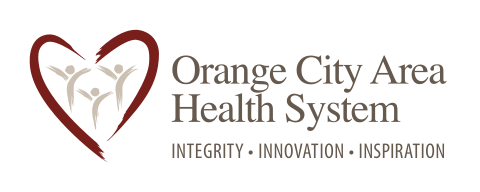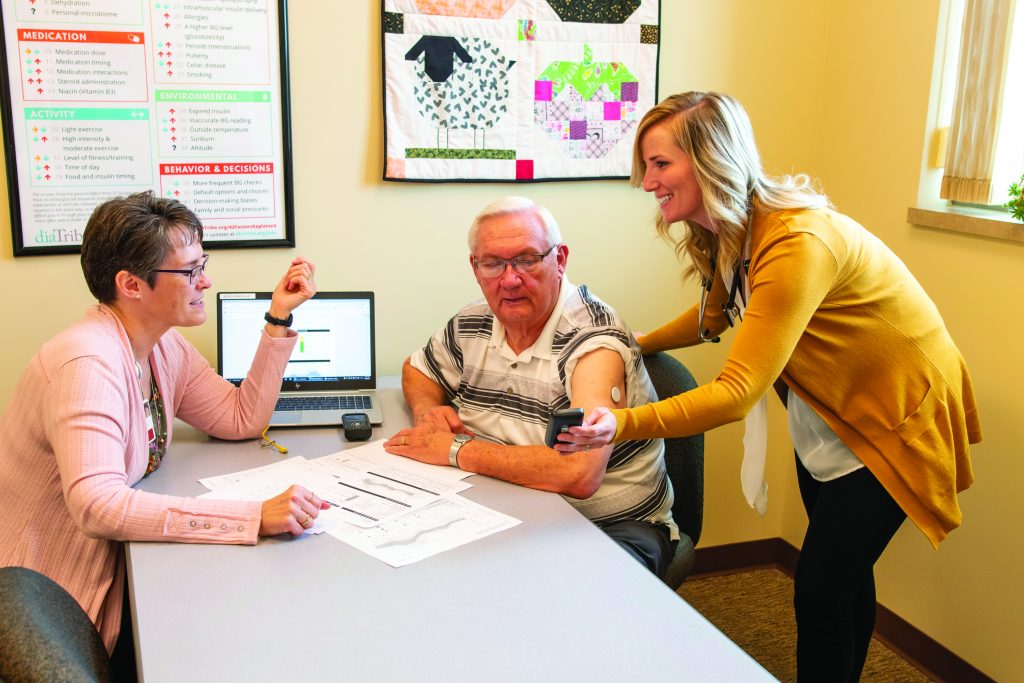-by Dee Meerdink, Diabetes Care Coordinator
There are lots of new technologies (and commercials!) for diabetes these days. Sometimes, these are helpful to make people aware of options they may not have seen before. Sometimes, they are just confusing – CGM, GLP-1, SGLT2 – sounds like alphabet soup! Let’s try to break down some of this
information.
One of the most exciting new technologies is CGM – Continuous Glucose Monitors. These devices are inserted into your body (arm or abdomen usually) and they check your blood sugar continuously – without a finger stick. Amazing for those people who have had diabetes for years and are tired of those pokes! A sensor is inserted into interstitial tissue (the layer of tissue under the skin) and this sends a signal to a receiver and blood sugar readings are available. Depending on the device, this sensor is worn for 10-14 days and then changed. Each product has different features. Sounds great, right? Why doesn’t everyone have one of these? Well, cost and insurance coverage are some of the obstacles. We have seen some improvements with coverage. Medicare now covers CGMs if certain criteria are met: diagnosis of diabetes, need to inject insulin three times a day, frequent insulin adjustments and a face to face meeting with provider every six months for diabetes care. If you have private insurance, coverage depends on your carrier, but I feel like it never hurts to check and see if a CGM could be covered. The other options is self-pay. Some CGMs brands have programs to get your out of pocket cost per month to about $75. A prescription is still needed. Contact your provider or your diabetes educator/care coordinator with questions.
GLP-1 are a group of medications for diabetes. The commercials frequently seen are for Ozempic, Bydreon, Rybelsus and Trulicity. These commercials tout lower blood sugars and weight loss. Have we seen this in our office? Yes. Is it for everyone? No. But it is an exciting class of medications. This class of medications do typically require a once a week injection, though there is now a daily oral version too (Rybelsus). GLP-1 work in three ways: slows down how food moves through the stomach, decreases the amount of sugar released from liver and increases insulin from pancreas when blood sugars are high. Common side effects are nausea, vomiting, constipation, diarrhea. Early research shows a benefit to heart health and kidney function. You can check with your provider if this medication is indicated for you and what product is covered by your insurance.
SGLT-2 are another group of medications that you are seeing commercials about. Brand names are Jardiance, Farxiga and
Invokana. These meds have shown promise for lowering blood sugars by eliminating extra sugars through the urinary systems. Common side effects include urinary tract infections and yeast infections. Research has shown beneficial cardiovascular outcomes. These include a reduced incidence of cardiovascular death and heart failure hospitalization in people with and without diabetes, and those with and without prevalent heart failure.
It is an exciting time in the world of diabetes care. Technology and new meds are great but some of the basics of diabetes care have not changed – eating a healthy diet, staying active, taking your medications as ordered, monitoring your blood sugar levels and seeing your provider regularly. Diabetes Care education is here to help you with this sometimes overwhelming diagnosis of diabetes. You don’t have to do this on your own. Reach out to your partners in health – Orange City Area Health System.

